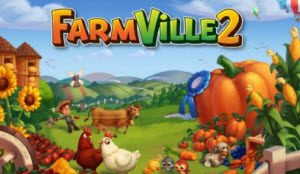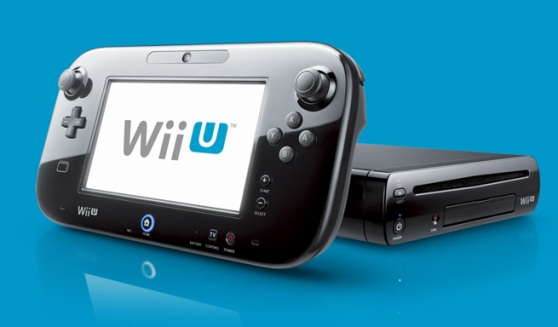The game industry is still living in compressed time. It went through more gyrations and disruptions in a year than it usually does in a generation. The revolution in games is on our doorstep, but several of the big companies trying to start it have failed to execute. They proved that ambition alone isn’t enough to take on the status quo.
But traditional game makers can’t be too smug. We saw the bankruptcy of THQ and the weakening of many of the strongest video game franchises. Social, mobile, and online forces will continue to reshape the business in the coming year, but nobody was free of trouble.
The good news is that the number of gamers continues to soar (past a billion), and, sometime soon, somebody is going to hit a phenomenal home run. That is why that, in spite of some phenomenal crash landings, entrepreneurs and investors are still going big with new game startups. Those startups aren’t raising as much money as they once did, but the entrepreneurs running them still have fire in their bellies.
We’ve gone back through the archives of GamesBeat for the past year and dug up the stories that made the biggest impact. Here’s our list of the biggest game stories of 2012.
 1. Zynga goes into a free fall
1. Zynga goes into a free fall
In tandem with Facebook’s disappointing initial public offering, Zynga missed its second quarter earnings targets. Demand for its games weakened, and the company’s stock price tanked 40 percent in a day. It never recovered during the year, and the toll was felt by every gaming company. In the third quarter, the results were disappointing again.
The problem for game startups is that Zynga’s value fell by 75 percent, crushing down the values of similar companies in both the public stock and private markets. Game company valuations plummeted, and it is no surprise that the pace of investments slowed in the latter part of 2012. Zynga tried to claw its way back up to recapture the glory days of its IPO. It launched a spate of new titles like FarmVille 2 and moved into mid-core games via acquisition. But the payoff isn’t clear just yet.
2. Mobile goes big
Zynga tried to move into mobile in a big way, but so did everybody else. The migration was huge, since many believed that smartphones and tablets would replace consoles. Rovio’s Angry Birds soared past a billion downloads, and the franchise took off in new directions with Angry Birds Space and Angry Birds Star Wars, not to mention a whole line of new Hasbro toys. Social game companies like Kabam successfully diversified beyond Facebook and invaded mobile — its Kingdoms of Camelot: Battle for the North turned out to be the No. 1 grossing app on the Apple App Store. About 86 percent of Flash game developers expanded into mobile. Like King.com, most of them tested their titles on the web and Facebook and then moved the successful games over to mobile.
By the third quarter, mobile-game startups accounted for 42 percent of all investments in the industry and 22 percent of the transaction value, according to Digi-Capital. That meant that mobile game investments were popular, but they were also smaller since mobile-game studios are still relatively small.
But the mobile market wasn’t easy. Indie game makers could make it big, but they often needed help. Mobile marketers tried everything the could to get their products noticed, but Apple had to crack down on the methods that weren’t good for consumers. Still, mobile promised to be huge. In the U.S., 44 percent of people were playing mobile games. And mobile became the fastest growing segment in games.
 3. Kickstarter launches a crowdfunding revolution
3. Kickstarter launches a crowdfunding revolution
While Zynga’s crash hurt funding, developers found a new fountain of money in their own fans. Tim Schafer’s Double Fine Productions tapped the crowdfunding site Kickstarter to fund a new adventure game. It raised more than $1 million on its first day and wound up raking in $3.3 million in 30 days by March 13. Brian Fargo’s inXile Entertainment jumped on the opportunity and raised nearly $3 million for Wasteland 2, a sequel that no traditional game publishers would touch. Jordan Weisman’s Harebrained Schemes raised $1.8 million for Shadowrun Returns. Kickstarters for a variety of other games such as Obsidian, Leisure Suit Larry, Pitfall, and others also took off, creating a revival for mid-sized game development studios.
Soon enough, crowdfunding wasn’t just a way to run around the gatekeeper publishers. It was an agent of disruption, giving more creators control over their destinies at a time when larger game companies had become risk averse. Ouya proved that as it raised $8.3 million for its Android-based video game console.
And Kickstarter wasn’t the only show in town. Gamesplanet Lab launched its own crowdfunding effort for games. Gambitious focused on raising crowdfunding and seed investment for game studios. And Chris Roberts’ Star Citizen took off in part through web-based donation system.
4. Nintendo’s kicks off the new generation
Nintendo’s run with the motion-sensing Wii was phenomenal, with more than 98 million units sold to date. But for the past couple of years, sales have lagged and Nintendo finally got a replacement console on the market with the launch of the Wii U on Nov. 18. Nintendo aimed to disrupt gaming again by incorporating tablets and asymmetrical gameplay into its new console. It initially sold out, with more than 400,000 units sold in its first week. But that doesn’t look so good in the context of some serious new competition. Apple’s new iPhones and iPad tablets routinely sell more than 2 million or 3 million units on opening weekend. Nintendo executives put on brave faces, but critics have been bearish on the Wii U throughout the past year. Those critics, such as our own GamesBeat editor-in-chief Dan “Shoe” Hsu, point out a number of weaknesses in the console, such as the lack of a killer app. Analysts expect it to sell out for the holidays, but the questions is how long it will keep selling for. So far, the Wii U hasn’t set the world on fire.
 5. OnLive’s collapse
5. OnLive’s collapse
No company held more promise than OnLive, which came on the scene in 2009 with a plan that astonished everyone. OnLive’s “cloud gaming” solution would allow people with low-end computers to play high-end games that were processed in a remote data center and then streamed as videos to the players’ screens. The cloud would allow players to log into their games from anywhere and play as long as they had a good Internet connection. OnLive beat its milestones and surprised the skeptics, launching its service in 2010. It came up with a lot of improvements, but it lost a number of big game publishers such as Electronic Arts as rivals such as Gaikai came on the scene. OnLive’s membership base grew slowly, and it had a tough time competing against free-to-play online games.
So the company kept raising money at a high valuation to keep the lights on. By 2012, the company had burned through more than $200 million in funding. It had more than 200 employees but failed to break even. It hit the wall in August, running out of money. An investor bought the company and ousted founder Steve Perlman. The company went through a bankruptcy alternative and lost many of its employees. It is trying for a comeback but in a much reduced state.
Perlman has moved on to his wireless broadband startup, but his failure to warn people about the collapse was unpopular with employees. This fall sent a shock wave through the cloud-gaming industry, and it was a case of a solid company racing too far ahead of its own revenues until it shattered its own dream.
6. Curt Schilling’s 38 Studios falls apart, forcing him to auction off his bloody sock
Curt Schilling was a baseball hero who pitched his team to a 2004 World Series victory with a wounded foot. After he retired, he started 38 Studios, a game startup with the audacious goal of creating a massively multiplayer online fantasy role-playing world that could challenge Blizzard Entertainment’s World of Warcraft. He poured more than $50 million of his own money into Project Copernicus, and he hired comic artist star Todd McFarlane and fantasy novelist R.A. Salvatore. It was the ultimate bet on the MMO business. But it wasn’t meant to be.
Schilling took $75 million in loans from Rhode Island in exchange for moving his company there from Massachusetts. But the company’s first game, Kingdoms of Amalur, was a mediocre success, and it ran out of money in June. It laid off more than 300 people abruptly and then filed for bankruptcy. Schilling had to auction off most of his property, including his bloody sock. Instead of killing off WoW, 38 Studios became a cautionary tale for states that provided rich incentives to risky startups.
 7. Social casino games take off
7. Social casino games take off
Everybody loves a bubble. Speculation that online gambling might be legalized led to a feeding frenzy in the adjacent market of non-real-money social casino games, where people spent money on virtual goods but couldn’t cash their winnings out. Games such as Zynga Poker had taken off over the past five years. But when the Justice Department ruled in December that online gambling could be legal, the floodgates opened. IGT paid $500 million in January for Double Down Interactive, a social gaming company with only 70 employees. After that jackpot, the speculators moved in. Dozens of new startups received funding for their social casino and sports betting games. Analysts report that social casino games will generate $1.6 billion in revenue this year, and that will steadily grow over the next several years. Betable has cut deals with five social casino game companies to convert their titles into real-money gambling games. Zynga’s crash took some of the air out of this bubble, but many are still betting that online gambling will give a big boost to the social casino game companies and visa versa. Zynga itself is betting big on online gambling, and so is Facebook. Will the bubble pop in 2013, or will the marriage of social casino games and online gambling pay off?

